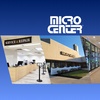{shortcode-763e199089d395b7caa45b4455b11c130fc8432c}
Anyone who’s had the pleasure of attending a meeting of the Cambridge City Council is familiar with how they begin. The clerk calls the roll. The gavel strikes. And first on the agenda: Public comment.
One by one, a procession of chagrined Cantabrigians delivers a three-minute speech to the Council. There is no limit on the number of people who may speak at the meeting, although speeches may be limited to two minutes if there are more than 20 speakers and one minute if there are more than 75. On a quiet night, there might be under 10. For a particularly contentious convening of the Council, dozens of speeches — sometimes over a hundred — are in order.
The city has recently proposed a revised draft of its charter which tries to correct for excessive proceduralism in community input while strengthening pathways to true citywide input. Critics lambast these changes as a democratic rollback. Yet, looking at the data, I have come to a different conclusion.
Cambridge’s community input process privileges a small, homogenous, and disproportionately affluent group of residents — not the public at large. Thus the city’s attempts to reform community input will not lead to the collapse of Cantabridgian democracy, but rather a necessary curtailment of an unwieldy, unrepresentative populism.
To be clear, the public comment is not the only way that the city allows so-inclined residents to directly share input.
Cambridge maintains nearly 50 boards and commissions that it encourages residents to serve on, including the Advisory Committee on Environmentally Desirable Practices (not to be confused with the Climate Protection Action Committee), the Arts Council Advisory Board (as opposed to the Public Arts Commission), and the Peace Commission. Cambridge also engages in participatory budgeting, where residents as young as 12 propose how to spend millions of the city’s tax dollars.
The proposed charter adds ballot initiatives and referenda, allows the council to refer measures to the electorate, and codifies City Council elections by proportional representation. However, it also removes the explicit public comment guarantee, sets uniform procedures for appointed boards and commissions, and allows the city manager to appoint members to the bodies.
Cambridge Citizens Coalition president and Harvard professor Suzanne P. Blier and CCC Advisor Heather Hoffman argue in the Cambridge Day that the proposed charter is problematic because, among other reasons, it limits public participation in city meetings. Likewise, CCC-endorsed City Council challenger Elizabeth K. Bisio is running on a platform of bringing community voices to the forefront in Council discussions.
It is tempting to take the view that more public participation inherently means a more democratic process. Yet, if Cambridge’s data is anything to go by, this is not necessarily the case.
I scraped data from hundreds of city council meetings over the past decade. I identified 5,578 public comments made at City Council meetings — equivalent to 0.47 percent of Cambridge residents per year, or roughly one comment per 213 residents each year.
{shortcode-bdb335d6a77de2d25938b4ff650b3595b2489cea}
But that figure overstates how many people actually participate. After going through the data and aggregating repeat speakers, there were only 2,561 unique individual speakers — about 0.22 percent of residents per year, or one speaker for every 460 residents annually.
The amount spoken isn’t evenly distributed, either. The top five percent of speakers, an elite group of 128 residents, accounted for almost 40 percent of all comments. The top 10 percent accounted for nearly half.
{shortcode-82bddcc0437c2c0198f485d92735d0f2e9224c3c}
The group of public-commenters is not only small but also demographically unrepresentative of the city. I was able to use the list of names and addresses to estimate the racial breakdown of the group. I also combined the address list with city property data to calculate property values and the distribution of owners to renters of the public-commenters.
The speakers appear to be substantially whiter and less representative of Cambridge’s Asian and Hispanic populations. I estimate the speaker share to be 70 percent white, significantly higher than the 55 percent reported in census data. Conversely, I estimate the Hispanic and Asian shares at six and seven percent, respectively, compared to the citywide Hispanic and Asian shares of nine and 19 percent, respectively.
{shortcode-0d69285912a72bc99a51c31e5e8ba18a9f4034c8}
Public commenters are slightly more likely to be homeowners, and they tend to skew wealthy. Of the 63.4 percent of speakers whose given addresses I was able to match with city data, 41 percent lived in owner occupied housing, compared to 34 percent citywide.
Among those who owned their homes, the median value assessed by the city was $1.17 million, 52 percent higher than the citywide median unit value of $768 thousand.
{shortcode-941efa945f87917edfaa250035f3a631afef9150}
These aren’t the voices of a broad public. They are the voices of a few dozen familiar names, mostly white, many with homes worth over a million dollars — and they dominate the city’s supposedly democratic channels of feedback.
That’s not to say Cambridge shouldn’t listen to its residents. But when public comment becomes a ritual stage for a tiny, unrepresentative minority, it’s worth asking whom that process really serves.
Benjamin Isaac ’27, a Crimson Editorial editor, is a Government and Economics concentrator in Quincy House.
Read more in Opinion
Student Workers and the Fight for Academia












